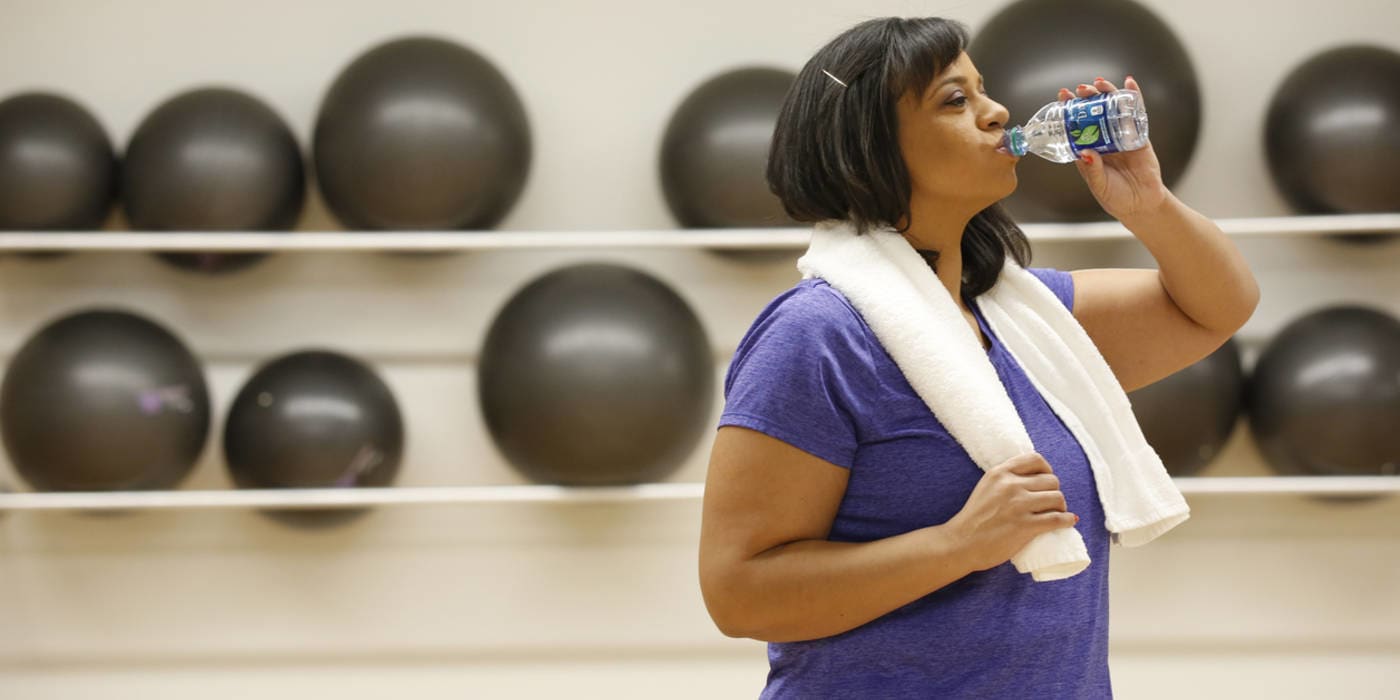5 tips to avoid falling off the ‘fitness cliff’

Come January in dietitians’ offices across the country, clients walk through the door either with their heads down (“I splurged! It was the holidays!”) or proud of their hardcore attempts at exercise — that is, until they hit the scale and see little or no weight lost since their last visit.
Inevitably, we dietitians then slowly walk our clients away from the ‘fitness cliff,’ the inevitable drop-off of New Year’s resolutions, which typically occurs in February. A good 80 percent of New Year’s resolutions fail by February, according to U.S. News and World Report.
Unfortunately, a sudden rush of motivation, especially of the extrinsic kind (for example, fit into a bathing suit by summer, lose 100 pounds or have a flat belly) does not equal a sudden drop in pounds on the scale.
A large study out of the Netherlands found that moving at least 30-60 min daily (from chores to walking to exercise) had a stronger impact on living into your 90s compared to BMI at the study’s start date or even an increase in BMI with older age.
So, while getting to a comfortable weight does improve one’s quality of life, this study suggests that having a consistent movement regimen is a big contributor among those that live a long life.
To stay motivated, try focusing on movement and how you feel, rather than pounds lost. More tips for staying on track:
1. Focus on how movement makes you feel in the short-term. Maybe it gives you time to yourself to think, less pain or a runner’s high. These are known as intrinsic motivators. They increase your desire to stay active. To realize them, though, you have to start moving instead of waiting for the motivation to come.
2. Do what you like. Often people feel as though they need to feel the burn, or that walking doesn’t count. This simply isn’t true. Any movement counts. Just move — your blood vessels will thank you for it!
3. Practice positive self-talk. Instead of beating yourself up for sitting on the couch, consider the long-term effects. For example:
“I could sit on the couch and watch my show with a bag of chips like I did yesterday, but this will lead to more back pain and weight gain and health complications, which I’ve seen with my own friends and family.”
4. Be prepared. Use the plethora of resources at your disposal to make this affordable and fun (e.g., Fitbit, on-demand workouts, fitness apps such as Sworkit, YouTube). Get your movement gear ready the day before to make it easier to get going.
5. Set a SMART goal. This can help clear the mind from distractions that interfere with your progress. Below is an example of a SMART goal followed by an action-oriented SMART goal to get you there.
SMART goal: I will lose 7 percent of my body weight in three months.
Action-oriented SMART goal: I will walk five days every week for 30 minutes.
Specific: Don’t be vague. “Get a bikini body by summer” is not as useful as “Lose 10 pounds by June 1.”
Measurable: Includes a number.
Attainable: Even 5-10 percent body weight loss has been shown to be beneficial to health.
Relevant: Ask yourself if it is a good time in your life to focus on your goal of weight loss. If not, pick another wellness goal that is more suitable. For example, it may be unrealistic to train for a marathon if you’ve just had major surgery, but walking a few minutes each day may not be.
Time-bound: We are motivated by deadlines, so setting an endpoint motivates us to get started.



